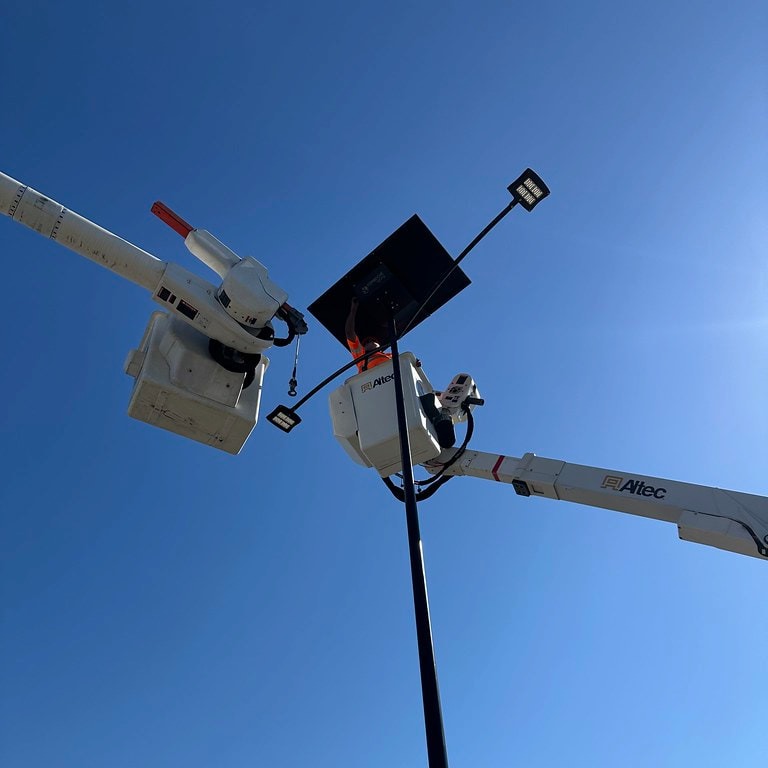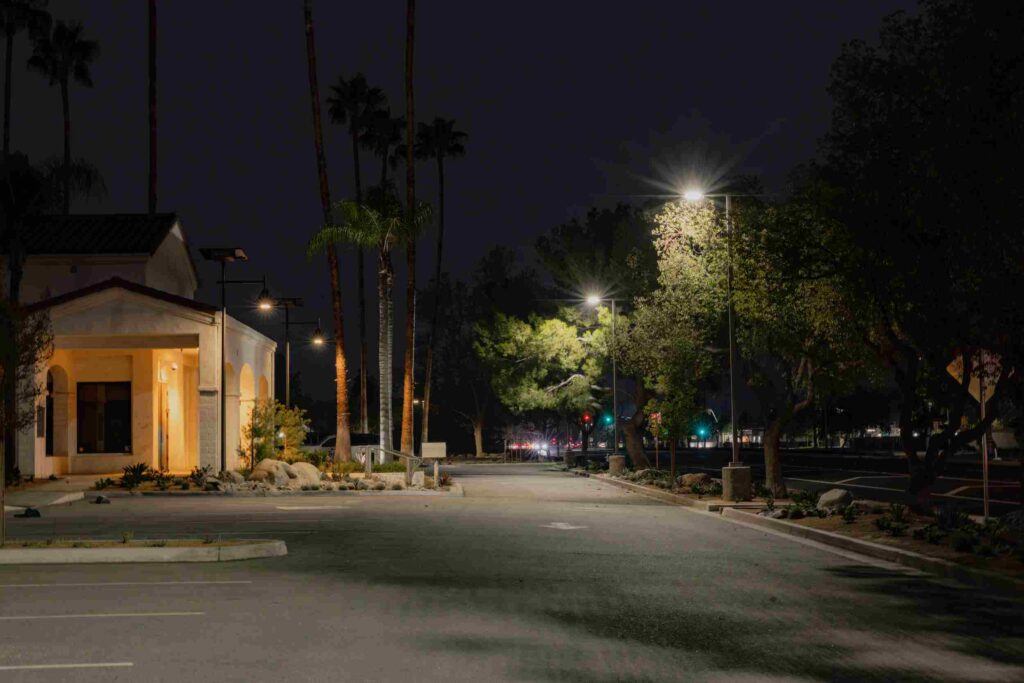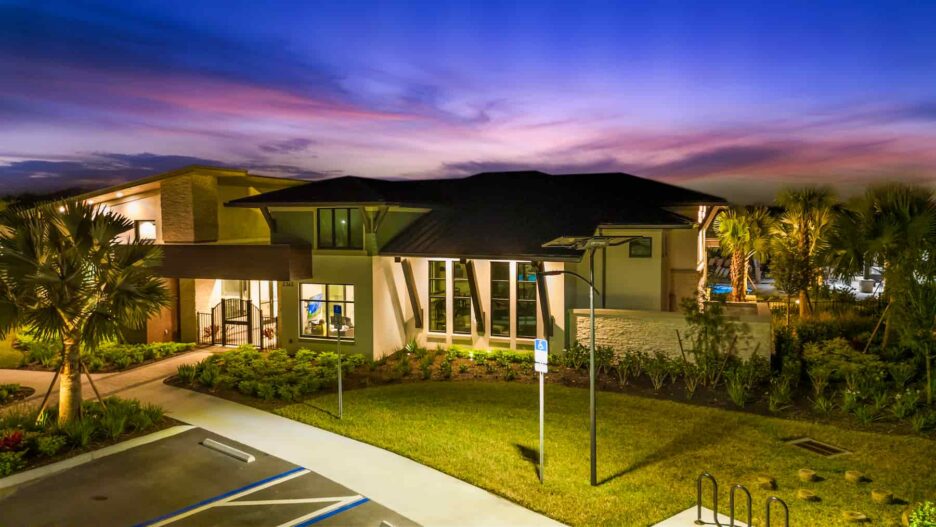Why Parking Lot Lighting Costs Vary More Than You Think
When planning a parking lot lighting project, one of the first questions that comes up is cost. But getting a straightforward answer isn’t always easy. That’s because the total price of a lighting system depends on several variables—including the type of lighting, layout, pole height, mounting method, and installation environment.
While traditional grid-powered systems remain common, solar-powered lighting options are changing the cost equation. Installation methods, infrastructure requirements, and long-term operating costs all vary significantly depending on the solution chosen.
This article breaks down the main cost drivers in parking lot lighting projects—from fixtures and poles to installation and long-term maintenance. Whether you’re budgeting for a new development or planning a retrofit, understanding these components will help you make a more informed, cost-effective decision.
Table of Contents
HID vs. LED vs. Solar
Fixture cost is one of the most visible expenses in a lighting project—but prices and performance vary widely by technology.
Legacy HID (high-intensity discharge) fixtures may have a lower up-front cost, but they come with hidden drawbacks:
- High energy use
- Frequent bulb and ballast replacements
- Poor lighting quality and warm-up delays
LED fixtures have become the go-to for their efficiency and reliability. Costs vary depending on:
- Lumen output and optical design
- Housing durability (especially in outdoor environments)
- Controls and dimming capabilities
Solar-powered LED systems, like Fonroche SmartLights, bundle the fixture, solar panel, battery, and smart controller into one unit. While initial costs are higher, they offer:
- Zero grid connection costs
- No energy bills
- 10+ years of maintenance-free operation
When comparing lifetime value, SmartLights often outperform both HID and standard LED systems—especially in locations where trenching or power access is costly.

What to Know About Pole Costs and Mounting Options
Light poles are a major component of any parking lot lighting system—and one of the most misunderstood when it comes to cost.
Prices vary based on pole height, material, wind rating, and installation method. Common materials include steel, aluminum, and composite. Steel is durable and widely used, but may require added corrosion protection. Aluminum is lighter and corrosion-resistant, though typically more expensive. Composite options offer a balance of durability and weight for specific environments.
Mounting type also affects pricing. Traditional grid-tied poles often require anchor bolts and buried conduits, while Fonroche SmartLights can be installed with direct-bury foundations, streamlining installation and reducing site disruption.
In solar installations, poles are designed to accommodate the added wind load of the solar panel and battery housing, and meet industry standards for structural integrity—often without the need for oversized or custom builds.
How Installation Method Impacts Total Project Cost
Installation often makes up the largest cost share of a grid-tied lighting project. That’s due to:
- Extensive trenching for underground conduit
- Electrical panels, control boxes, and labor-intensive cabling
- Restoration work for roads, sidewalks, or green areas
- Permitting and coordination with utility companies
These hidden costs can push installation prices far beyond the fixtures and poles themselves.
In contrast, Fonroche SmartLights streamline the process:
- No trenching or wiring—lights are installed in under an hour
- No external power or metering equipment
- Minimal disruption to existing infrastructure
This makes solar a smart choice not just for energy savings, but for avoiding costly, complex site work altogether.
Long-Term Costs: Energy, Maintenance & Replacement
After installation, operating costs can quickly become the biggest expense—especially with grid-tied lighting. Electricity bills, meter fees, and routine maintenance can continue for years, adding up far beyond the initial purchase.
Fonroche SmartLights eliminate these recurring costs. Fully off-grid, they require no utility connection and deliver over a decade of lighting without scheduled maintenance. The integrated battery system—based on long-life NiMH technology—is 98% recyclable and built to last up to 12 years without performance loss.
By removing electricity use and service calls from the equation, SmartLights help control the total cost of ownership from day one through year ten and beyond.

A Smarter Way to Plan for Parking Lot Lighting
Parking lots don’t have to be cost burdens or energy drains. With the right lighting approach, they can become safer, more efficient spaces—without the long-term expenses of traditional systems. From fixture selection to installation, every decision shapes how well your lighting performs over time.
Solar-powered options like Fonroche SmartLights shift the focus from short-term pricing to long-term value. By removing trenching, wiring, and energy bills from the equation, they offer a way to meet lighting requirements with less complexity and more predictability.
For planners and project leads, the benefits go beyond savings. Smart, off-grid systems can reduce environmental impact, simplify timelines, and support broader resilience goals—all while maintaining high-quality illumination where it’s needed most.
Connect with a FLA Team Member to explore how SmartLights can help you build lighting plans that are practical, reliable, and built for the future.

